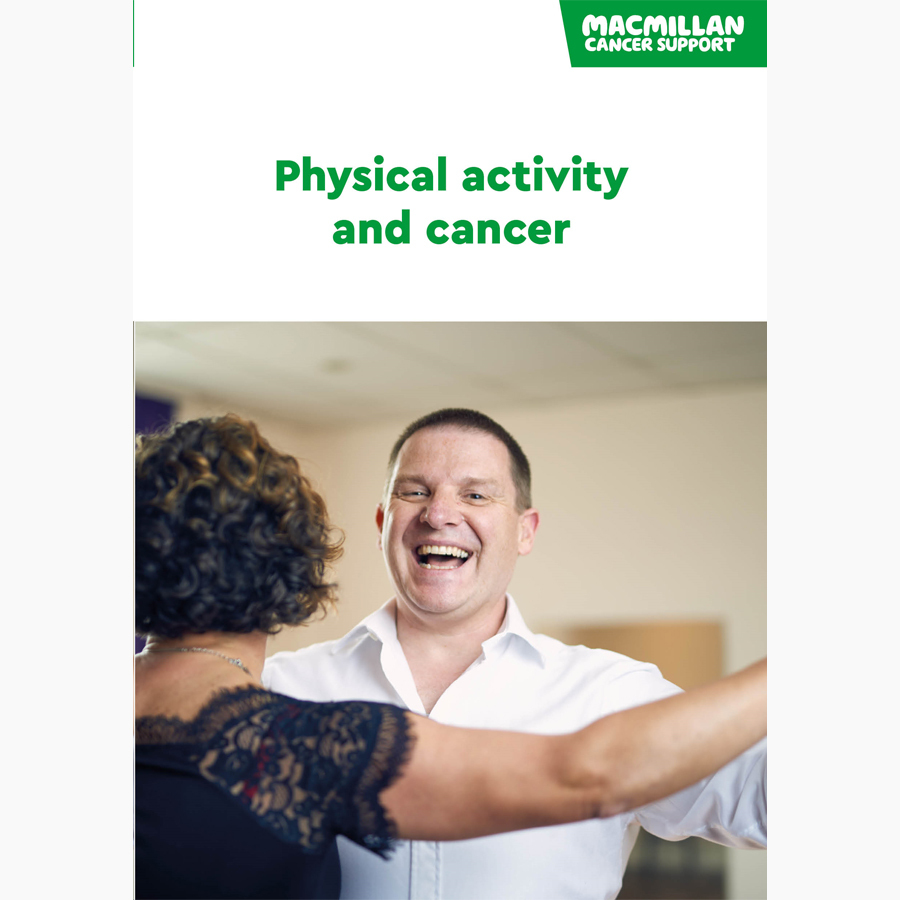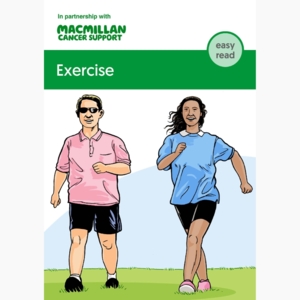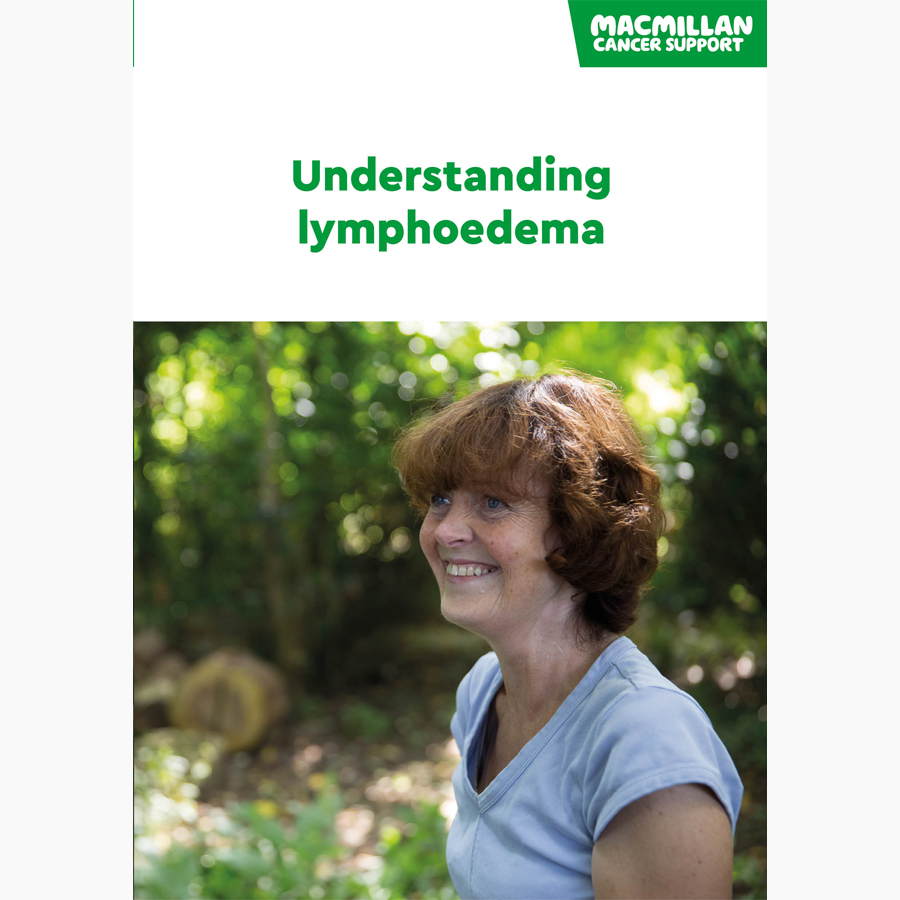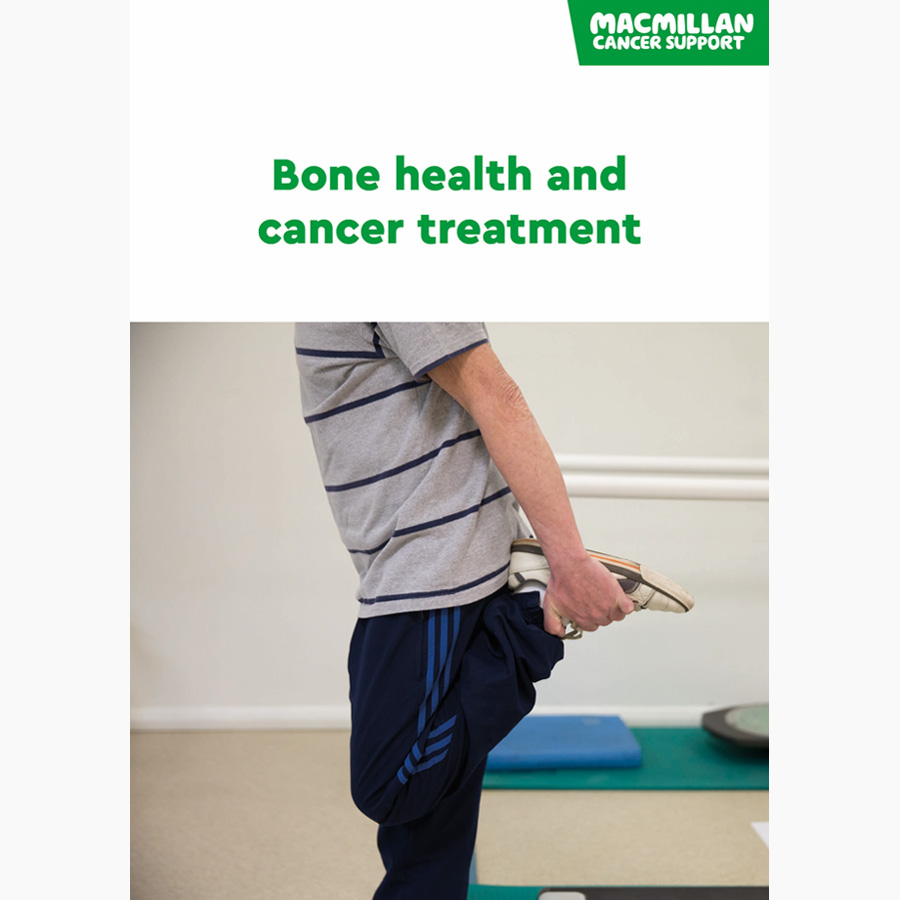Types of physical activity
What types of activity should I do?
If possible, try to do a mix of activities that improve your aerobic fitness, balance, strength and flexibility. Becoming physically active for the first time or returning to activity during or after cancer is not always easy. If you are going through treatment, you may find it useful to plan your activity around this. If you usually feel very tired at a certain time of day, avoid planning activity for this time.
Think about what you are most interested in doing and what you would enjoy the most. You could make a list below of the different activities you and your family and friends could try. There is not a single activity that is best for everyone. The important thing is to choose something that fits in with your life.
Some people find that if they sign up to a challenge it keeps them motivated. For example, you could sign up to do a 5km walk or run, or a distanced swim. Or you could set a challenge with friends and family to walk a certain number of steps every day, or every week.
Exercising safely
If you decide to do some physical activity, it is important to make sure you do it safely.
We have more information about exercising safely.
Booklets and resources
Exercise intensity
If you have not been active for a while, you should increase your activity slowly. Try to do a little more activity each week.
Intensity means how much energy you use. You may exercise at the following levels:
-
Light intensity
This means you are breathing and talking easily. It does not feel like there is a lot of effort involved.
-
Moderate intensity
This means your breathing is quicker and deeper, but you can talk. Your body warms up and your face has a healthy glow. Your heart is beating faster than normal but not racing.
-
Vigorous or high intensity
This means you are breathing very hard, so you cannot carry on a conversation. Your heartbeat feels fast.
When you are comfortable doing an activity for longer, you can think about increasing the intensity from light to moderate, and then to vigorous. For example, you could walk the same distance but in a shorter time and at a faster pace.
Aerobic exercise
Aerobic exercise works your heart and lungs. It uses large muscle groups, such as the ones in your legs. It makes you breathe harder and raises your heart rate, so your heart works harder to pump blood through the body. It is good for your heart and the blood vessels that carry blood around the body.
These are common aerobic exercises:
-
Daily activities
Taking the stairs, doing housework such as vacuuming or hanging out washing, gardening, walking the dog and playing games with children are all considered moderate intensity activities.
-
Walking briskly
This is one of the simplest and most effective aerobic exercises. It is also a weight-bearing exercise, because your feet and legs support your body’s weight. This means it is good for strengthening the bones such as the spine, pelvis and leg bones. Walking can be a moderate intensity activity. All you need are shoes that are comfortable for walking.
-
Gardening
This is a way of enjoying some physical activity outdoors. Heavier gardening such as digging or pushing a lawn mower may be moderate activity. Spending time in the garden might also help with stress or anxiety. If you do not have access to a garden, there are schemes across the UK where you can garden, grow fruit and vegetables or take part in nature conservation. The Conservation Volunteers – Green Gym® is one of these schemes. Visit your local authority’s website to see which schemes might be available near you. The National Garden Scheme gives access to private gardens in the UK.
-
Running and jogging
These can be considered vigorous activity. They are good for your heart and lungs and are weight-bearing exercises. These activities are high impact and may put stress on your spine and joints. If you have bone or joint problems, you may want to choose something less weight-bearing. This could include jogging on a trampoline, cycling or swimming.
-
Cycling and swimming
These can be considered moderate or vigorous activity. They are good for your heart and lungs. They strengthen your muscles but put very little strain on your joints, because they are weight-supported exercises. They can be good activities if you have bone or joint pain. Swimming is particularly beneficial if you have lymphoedema. Swimming is not recommended if you have irritated skin due to radiotherapy. It is also not recommended if you have a PICC line or central line for treatment.
-
Group exercise and other sports
There are other aerobic exercise options you could do with a friend or a group. These include circuit classes, dancing, golf, tennis, badminton and bowling. Depending on the activity, they can be moderate or vigorous intensity activities.
Muscular strength exercises
Muscular strength exercises involve making your muscles work harder than usual, against some form of resistance. They strengthen muscles, bones and joints. Having good muscle strength makes it easier to do everyday things for yourself. It can help you be more independent. This is a good activity if you have, or are at risk of, bone problems.
The exercises can be done with body weight, hand weights, machines or resistance bands. These may be available from a physiotherapist.
After 4 to 6 weeks, or when you find the exercises too easy, you can slowly increase the weight you use. Or you can change the resistance band to make the exercises harder.
If you are doing a gym-based or circuit programme with resistance machines and free weights, make sure:
- you are supervised at first
- it is run by a qualified exercise specialist who has knowledge of cancer and its treatment.
Exercises you can do at home
You can do simple strength exercises at home, such as lifting cans of food or bottles of water. There are other simple resistance exercises you can do at home, such as moving from sitting to standing using a chair, or press-ups against a wall. The NHS website shows you how to do these and other simple exercises safely at home. We Are Undefeatable also have videos on their website that you may find useful.
Exercises you can do sitting down
Lymphoedema and strength exercises
Booklets and resources
Flexibility exercises
Exercises that stretch and work your joints and muscles help you stay flexible. They can help prevent injuries and strains. Simple stretching exercises are a good way to start, especially if you have been unwell or have recently had surgery. The NHS website has some stretches you can do. It is best to do these stretches as a daily routine. They will only take you a few minutes.
Yoga, tai chi and qi gong are also good to help improve flexibility. They use breathing techniques combined with body movements. They can also help you relax and reduce stress. Relaxation breathing can also help with stress and anxiety. You can do this anywhere and in any position for example sitting, standing or lying down. Breathe in through your nose counting from 1 to 5 and then let the breath out through your mouth again counting from 1 to 5. Do this for at least 5 minutes.
Balance exercises
Yoga, tai chi, pilates, body balance and qi gong help increase balance and strength. Cycling (but not on an exercise bike) and dancing are also good for your balance. If you have problems with balance, it is a good idea to speak to a healthcare professional before starting an exercise programme. They can give you advice to help make the exercise safe for you. Balance exercises can help with the risk of falling.
We Are Undefeatable has a video you can do at home.
Weight-bearing exercises
Activities where you are supporting your own body weight will help keep bones strong. These are sometime called weight-bearing exercises. They include:
- walking
- dancing
- resistance training, such as lunges and squats.
You could also try impact activities, such as jumping and skipping. But impact activities are not recommended if you have any bone metastases.
If you have any bone problems, get advice on exercise from your healthcare team.
Booklets and resources
Finding activities near you
There are lots of organisations and websites that can help you find out which activities are available near you:
- Contact your local council. Look on the website or call to find out which activities are provided in parks and leisure centres.
- Parkrun is a free community event where you can walk, jog or run 5 kilometres. There are also 5k Your Way events for people affected by cancer. Take a look at their websites to see if there is one near you.
- Some Maggie’s centres also run fitness classes or may be able to tell you about classes in your area. They also have classes on prehabilitation.
- Ask your GP if they can help you find a group or specialist support. There may be services in your area that you can only access if a GP refers you. This might include referral to an exercise group, a falls prevention scheme if you are worried about falling, or for physiotherapy. For example, you may be referred to a falls prevention scheme if you have had surgery and have problems with stiffness.
- If you would like to exercise with other people with cancer, search for health groups in your local area. You can also try using the Cancer Care Map webpage. This has a list of groups in your area for people affected by cancer.
- The BBC has a page for finding sports and activities in your area.
- There is a national search tool for England on the NHS website. Enter your town or postcode for a list of activities near you.
- In Scotland there is a local information system for Scotland (ALISS). This allows you to find groups and support in your local community and online.
- The charity CanRehab Trust provides online exercise programmes for anyone affected by cancer.
About our information
This information has been written, revised and edited by Macmillan Cancer Support’s Cancer Information Development team. It has been reviewed by expert medical and health professionals and people living with cancer.
-
References
Below is a sample of the sources used in our physical activity information. If you would like more information about the sources we use, please contact us at cancerinformationteam@macmillan.org.uk
Campbell K, Winters-Stone K, Wiskemann J, et al. Exercise guidelines for cancer survivors: consensus statement from international multidisciplinary roundtable. Med Sci Sports Exerc. 2019 November; 51911): 2375-2390 [accessed February 2023].
www.gov.uk Physical activity for adults and older adults: 19 and over [accessed February 2023].
Date reviewed

Our cancer information meets the PIF TICK quality mark.
This means it is easy to use, up-to-date and based on the latest evidence. Learn more about how we produce our information.
The language we use
We want everyone affected by cancer to feel our information is written for them.
We want our information to be as clear as possible. To do this, we try to:
- use plain English
- explain medical words
- use short sentences
- use illustrations to explain text
- structure the information clearly
- make sure important points are clear.
We use gender-inclusive language and talk to our readers as ‘you’ so that everyone feels included. Where clinically necessary we use the terms ‘men’ and ‘women’ or ‘male’ and ‘female’. For example, we do so when talking about parts of the body or mentioning statistics or research about who is affected.
You can read more about how we produce our information here.








